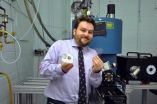(Press-News.org) Cross a crow and it'll remember you for years.
Crows and humans share the ability to recognize faces and associate them with negative, as well as positive, feelings. The way the brain activates during that process is something the two species also appear to share, according to new research being published this week.
"The regions of the crow brain that work together are not unlike those that work together in mammals, including humans," said John Marzluff, University of Washington professor of environmental and forest sciences. "These regions were suspected to work in birds but not documented until now.
"For example it appears that birds have a region of their brain that is analogous to the amygdala of mammals," he said. "The amygdala is the region of the vertebrate brain where negative associations are stored as memories. Previous work primarily concerned its function in mammals while our work shows that a similar system is at work in birds. Our approach could be used in other animals – such as lizards and frogs – to see if the process is similar in those vertebrates as well."
Marzluff is the lead author of a paper being published the week of Sept. 10 in the online edition of the Proceedings of the National Academy of Sciences.
Previous research on the neural circuitry of animal behavior has been conducted using well-studied, often domesticated, species like rats, chickens, zebra finches, pigeons and rhesus macaques – and not wild animals like the 12 adult male crows in this study.
The crows were captured by investigators all wearing masks that the researchers referred to as the threatening face. The crows were never treated in a threatening way, but the fact they'd been captured created a negative association with the mask they saw. Then for the four weeks they were in captivity, they were fed by people wearing a mask different from the first, this one called the caring face. The masks were based on actual people's faces and both bore neutral expressions so the associations made by the crows was based on their treatment.
In most previous neurological studies of animals, the work usually starts by sedating the animals, Marzluff said. Instead the approach developed by the UW involved injecting a glucose fluid commonly used in brain imaging into the bodies of fully alert crows that then went back to moving freely about their cages. The fluid flooded to the parts of the crow brains that were most active as they were exposed for about 15 minutes to someone wearing either the threatening or caring mask.
Then the birds were sedated and scans made of their brains. All the birds were returned to the wild once all the work was completed.
"Our approach has wide applicability and potential to improve our understanding of the neural basis for animal behavior," wrote Marzluff and co-authors Donna Cross, Robert Miyaoka and Satoshi Minoshima, all faculty members with the UW's radiology department. The department funded the preliminary work while the main project was conducted using money from theUW's Royalty Research Fund.
Most neurological studies to date in birds have concerned their songs – how their brain registers what they hear, how they learn and come up with songs of their own. This new approach enables researchers to study the visual system of birds and how the brain integrates visual sensation into behavioral action, Marzluff said.
Among other things the findings have implications for lowering the stress of captive animals, he said.
"By feeding and caring for birds in captivity their brain activity suggests that the birds view their keepers as valued social partners, rather than animals that must be feared. So, to keep captive animals happy we need to treat them well and do so consistently," he said.
Intriguingly, Marzluff said the findings might also offer a way to reduce conflict between birds and endangered species on which they might be feeding. In the Mojave Desert, for instance, ravens prey on endangered desert tortoises. And on the West and East coasts, crows and ravens prey on threatened snowy plovers.
"Our studies suggest that we can train these birds to do the right thing," Marzluff said. "By paring a negative experience with eating a tortoise or a plover, the brain of the birds quickly learns the association. To reduce predation in a specific area we could train birds to avoid that area or that particular prey by catching them as they attempt to prey on the rare species."
The partnering of neuroscientists with ecologists could be used to better understand the neural basis of cognition in widely diverse animals, said co-author Cross. For example, her suggestion to use the glucose technique prior to brain scans, so the crows could be fully awake, could be used for other animals.
"This was a true collaboration that would never be possible without the people that were involved with very different areas of expertise," she said.
INFORMATION:For more information:
Marzluff, 206 616-6883, corvid@uw.edu
Cross, 206-598-3702, dcross@uw.edu
Suggested websites:
PNAS abstract of paper
http://www.pnas.org/content/early/2012/09/05/1206109109.abstract
Marzluff
http://www.cfr.washington.edu/SFRPublic/People/FacultyProfile.aspx?PID=10
UW School of Environmental and Forest Science
http://www.cfr.washington.edu/
Donna Cross
http://www.rad.washington.edu/radiology-personnel/dcross
Robert Miyaoka
http://www.rad.washington.edu/radiology-personnel/rmiyaoka/?searchterm=Miyaoka
Satoshi Minoshima
http://www.rad.washington.edu/radiology-personnel/minoshim/?searchterm=Satoshi%20Minoshima
Department of Radiology
http://www.rad.washington.edu/
UW's Royalty Research Fund
http://www.washington.edu/research/?page=rrf
Crows react to threats in human-like way
2012-09-11
ELSE PRESS RELEASES FROM THIS DATE:
Droughts are pushing trees to the limit
2012-09-11
As temperatures rise and droughts become more severe in the Southwest, trees are increasingly up against extremely stressful growing conditions, especially in low to middle elevations, University of Arizona researchers report in a study soon to be published in the Journal of Geophysical Research Biogeosciences.
Lead author Jeremy Weiss, a senior research specialist in the UA department of geosciences, said: "We know the climate in the Southwest is getting warmer, but we wanted to investigate how the higher temperatures might interact with the highly variable precipitation ...
Parents' education before migrating tied to children's achievement
2012-09-11
Immigrant parents' education before migrating is more strongly tied to their children's achievement in the United States than any other social, economic, or linguistic parental attribute, either before or after migration. That's the conclusion of a new study in a special section of the September/October 2012 issue of Child Development on the children of immigrants.
The study was carried out by researchers at the Pennsylvania State University.
Immigrants come to the United States with different socioeconomic backgrounds and levels of proficiency in English. Past research ...
Pregnancy exposures determine risk of breast cancer in multiple generations of offspring
2012-09-11
WASHINGTON, DC —Researchers from Georgetown Lombardi Comprehensive Cancer Center demonstrate, in animals, that maternal exposure to a high-fat diet or excess estrogen during pregnancy can increase breast cancer risk in multiple generations of female offspring — daughters, granddaughters and even great-granddaughters.
This study, published online today in Nature Communications, shows for the first time that the risk of some "familial" breast cancers originate from biological alterations caused by maternal diet during pregnancy that not only affect the directly exposed ...
NIH researchers restore children's immune systems with refinements in gene therapy
2012-09-11
Researchers have demonstrated that a refined gene therapy approach safely restores the immune systems of some children with severe combined immunodeficiency (SCID). The rare condition blocks the normal development of a newborn's immune system, leaving the child susceptible to every passing microbe. Children with SCID experience chronic infections, which usually triggers the diagnosis. Their lifespan is two years if doctors cannot restore their immunity.
The findings from facilities including the National Institutes of Health, the University of California, Los Angeles ...
UCLA stem cell researchers use gene therapy to restore immune systems in 'bubble babies'
2012-09-11
UCLA stem cell researchers have found that a gene therapy regimen can safely restore immune systems to children with so-called "Bubble Boy" disease, a life threatening condition that if left untreated can be fatal within one to two years.
In the 11-year study, researchers were able to test two therapy regimens for 10 children with ADA-deficient severe combined immunodeficiency (SCID). During the study, they refined their approach to include a light dose of chemotherapy to help remove many of the blood stem cells in the bone marrow that are not creating an enzyme called ...
Interventions can reduce falls in people over 65 who live at home
2012-09-11
There is now strong evidence that some interventions can prevent falls in people over the age of 65 who are living in their own homes. However, the researchers who reached this conclusion say that care is needed when choosing interventions, as some have no effect. The full details are published this month in The Cochrane Library. This is an update of a previous report that contains data from 51 additional trials, enabling the authors to reach many more conclusions.
As people get older they may fall more often. The reasons vary, including problems with balance, vision ...
Inhaled pain relief in early labor is safe and effective
2012-09-11
Inhaled pain relief appears to be effective in reducing pain intensity and in giving pain relief in the first stage of labour, say Cochrane researchers. These conclusions came from a systematic review that drew data from twenty-six separate studies that involved a total of 2,959 women, and are published in The Cochrane Library.
Many women would like to have a choice in pain relief during labour and would also like to avoid invasive methods of pain management. Inhaling a mixture of oxygen and either a flurane derivative or nitrous oxide reduces pain, but enable the mother ...
Latinos more vulnerable to fatty pancreas, Type 2 diabetes, Cedars-Sinai study shows
2012-09-11
LOS ANGELES – Latinos are more likely to store fat in the pancreas and are less able to compensate by excreting additional insulin, a Cedars-Sinai study shows.
The research examining overweight, prediabetic patients, published online by Diabetes Care, is part of a focus by Cedars-Sinai's Heart Institute, Biomedical Imaging Research Institute and Diabetes and Obesity Research Institute, to identify biological measures that could help predict which patients are likely to develop type 2 diabetes.
"Prevention of diabetes is our goal," said Richard Bergman, PhD, director ...
Study provides insight into why severely obese women have difficulty getting pregnant from IVF
2012-09-11
Boston – One third of American women of childbearing age are battling obesity, a condition that affects their health and their chances of getting pregnant. Obese women often have poor reproductive outcomes, but the reasons why have not been clearly identified. Now, a novel study led by Catherine Racowsky, PhD, director of the Assisted Reproductive Technologies Laboratory at Brigham and Women's Hospital (BWH), and performed by Ronit Machtinger, M.D., of BWH, in collaboration with Catherine Combelles, PhD, of Middlebury College, gains further insight into the underlying ...
U of Toronto-led team induces high-temperature superconductivity in a semiconductor with Scotch tape
2012-09-11
September 10, 2012-- Issued by the UNIVERSITY OF TORONTO
Under strict embargo by Nature Communications until Tuesday, September 11, 11 a.m. EST
An international team led by University of Toronto physicists has developed a simple new technique using Scotch poster tape that has enabled them to induce high-temperature superconductivity in a semiconductor for the first time. The method paves the way for novel new devices that could be used in quantum computing and to improve energy efficiency.
"Who would have thought simply sticking things together can generate entirely ...


